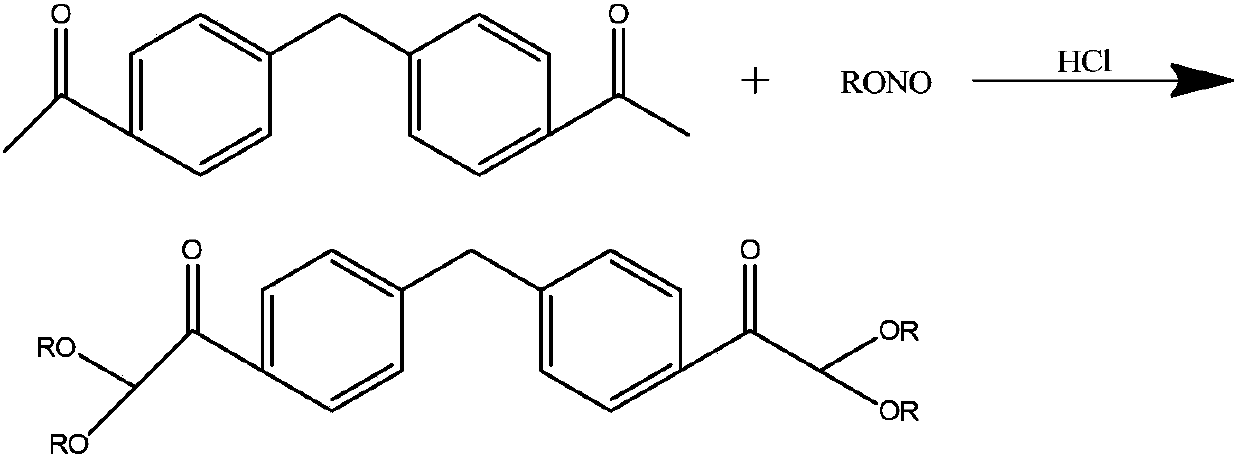Photoinitiator 4,4'-bis(2,2-dialkoxyacetyl)biphenyl and synthetic method thereof
A dialkoxyacetyl and diethoxyacetyl technology is applied in the application field of photoinitiator 4,4'-dibiphenyl in photopolymerization materials, which can solve problems such as VOC emission and environmental pollution, and achieve optimization Effects of reaction conditions, economical production processes
- Summary
- Abstract
- Description
- Claims
- Application Information
AI Technical Summary
Problems solved by technology
Method used
Image
Examples
Embodiment 1
[0019] In a 2000-liter reactor, add 600g of ethanol and 238g of 4,4'-diacetylbiphenyl, feed 38g of dry hydrogen chloride gas under ice-water cooling, and feed 268g of methyl nitrite at 30-35°C. Continue to react at this temperature for 4 hours after completion, stop the reaction, distill ethanol off under reduced pressure to obtain a crude product. Distilled under reduced pressure to obtain 297 g of 4,4'-bis(2,2-dialkoxyacetyl)biphenyl with a yield of 83.0%.
Embodiment 2
[0021] In a 2000-liter reactor, add 600g of ethanol and 238g of 4,4'-diacetylbiphenyl, feed 42g of dry hydrogen chloride gas under ice-water cooling, and feed 268g of ethyl nitrite at 30-35°C. Continue to react at this temperature for 4 hours after completion, stop the reaction, distill ethanol off under reduced pressure to obtain a crude product. Distilled under reduced pressure to obtain 298 g of 4,4'-bis(2,2-dialkoxyacetyl)biphenyl with a yield of 83.2%.
Embodiment 3
[0023] In a 2000-liter reactor, add 600g of ethanol and 238g of bis(4-diacetylphenyl)methane, feed 38g of dry hydrogen chloride gas under ice-water cooling, and feed 330g of ethyl nitrite at 30-35°C , continue to react at this temperature for 4 hours after passing through, stop the reaction, and distill ethanol off under reduced pressure to obtain a crude product. Distilled under reduced pressure to obtain 357 g of 4,4'-bis(2,2-dialkoxyacetyl)biphenyl with a yield of 86.2%.
PUM
 Login to View More
Login to View More Abstract
Description
Claims
Application Information
 Login to View More
Login to View More - R&D
- Intellectual Property
- Life Sciences
- Materials
- Tech Scout
- Unparalleled Data Quality
- Higher Quality Content
- 60% Fewer Hallucinations
Browse by: Latest US Patents, China's latest patents, Technical Efficacy Thesaurus, Application Domain, Technology Topic, Popular Technical Reports.
© 2025 PatSnap. All rights reserved.Legal|Privacy policy|Modern Slavery Act Transparency Statement|Sitemap|About US| Contact US: help@patsnap.com



